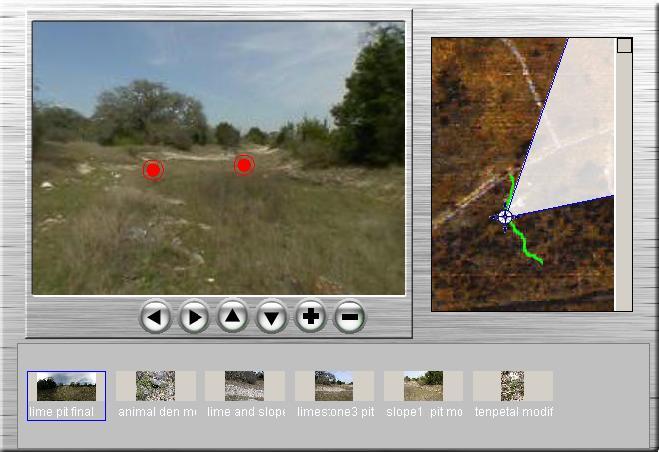Nature Trail Stop 3: Limestone Pit
Like the previous stop along the trail, this site has large outcroppings of exposed rock, which is limestone. Turn in the tour so that you are looking at the exposed limestone. At this site, as well as the previous site, the lower areas in elevation contain numerous types of grasses and herbs. Now, try to find the lowest elevation at this site.
At the starting point of the tour, we see the lowest area at this site, directly in front of us. During times of heavy precipitation this lower area fills with water. If enough precipitation falls, the lower area remains full of water and seems like a small swamp for a short time.
Take another look at the site. This time look for where tree clusters are located. You can see close-up pictures of the tree clusters to identify what changes in the landscape are occurring in their immediate surroundings. What do you notice?
Hopefully, you are able to see that the tree clusters at this particular site are located on the hilltops, or areas of higher relative elevation. So, why are the tree clusters on the hilltops and the grasses and flowers on the valley floor, or the relatively lower elevations?
The answer lies in the limitations of the trees on the slopes and hilltops. If you remember from the entrance, the live oak must be in an area that is well-drained. The other prominent tree at this site, Ashe Juniper, also requires well-drained habitats. Thus, the trees are mainly located where the precipitation drains away from the plant, down the slope. The area where the water pools up during severe rain events consists of grasses and herbs because these plants do not have to have as well-drained of a habitat as the trees do.
Tenpetal Anemone
On the other side of the trail, we see an area where some wildflowers are beginning to bloom. This species is the tenpetal anemone (scientific name: Anemone berlandieri). The tenpetal anemone is suited for sandy, calcerous, or limestone soils. The Freeman Ranch has limestone-based soils because the bedrock, as we see at this site, is limestone. The tenpetal anemone does have some challenges in living at the Freeman Ranch though. It is occasionally eaten by the white-tail deer, which is an abundant species in the Edward’s Plateau.
Take a closer look at the shape of the flower and its petals in the tour above. Then classify the species in your species inventory table.
Now we are ready to go on to our next stop, the Juniper Thicket. Take some time to complete the Limestone Pit section of your field notes and record new species before going into the Juniper Thicket.
